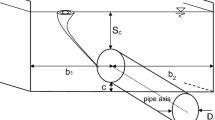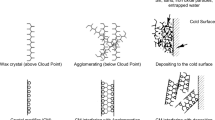Abstract
Failure and loss in hydrocarbon storage tanks lead to severe environmental and economic losses, reach hundreds of millions of dollars, as well as human casualties. These losses are magnified due to fire propagation between tanks caused by intense incident radiation on adjacent tanks that are exposed to the fire. Codes and standards recommendations regarding spacing between tanks and cooling water application rate are inconsistent and contradicting. According to the author review, scarce studies investigated circular pool fires and the accompanied thermal radiation on cylindrical surfaces on Fire Dynamics Simulator (FDS). This study numerically investigates the thermal radiation emitted from full surface circular pool fires on the adjacent cylindrical tanks surfaces on FDS. Additionally, the study analyzes the effect of different parameters such as fuel type, wind effect and spacing between tanks on fire propagation in hydrocarbon storage tanks. In addition, the effect of the cooling water application rate and its variation with the above parameters on prevention of fire propagation is investigated. The incident heat flux produced from using Heptane fuel was from 30 to 77% higher than that produced from using ethanol fuel. Increasing wind speed from zero to 3 m/s caused the incident heat flux to increase up to four times the initial value. Increasing the spacing between tanks from 0.5 to one time, the pool fire diameter caused more than 30% reduction in the incident heat flux on the target tank. Application of cooling water on the surface of the tanks exposed to fire showed significant reduction in incident heat flux while applying 2 Lit/min × m2 of cooling water, this reduction reached 50% in some cases . However, doubling the cooling water application rate to 4 Lit/min × m2 showed limited improvement in cooling rate, ranged between 5 and 15%. These findings are consistent with IP19 standard recommendations against other codes and standards.













Similar content being viewed by others
References
P. Moshashaei, S.S. Alizadeh, L. Khazini, M. Asghari-Jafarabadi, Investigate the causes of fires and explosions at external floating roof tanks: A comprehensive literature review. J. Failure Anal. Prevent. 17, 1044–1052 (2017)
K.B. Mishra, K.D. Wehrstedt, H. Krebs, Lessons learned from recent fuel storage fires. Fuel Process. Technol. 107, 166–172 (2013)
J.I. Chang, C.C. Lin, A study of storage tank accidents. J. Loss Prevent. Process Ind. 19(1), 51–59 (2006)
N. Ramsden, K.A. Abusaieda, A study of water cooling using different water application techniques to protect storage tank walls against thermal radiation. Process Safety Environ. Protect. 109, 577–598 (2017)
K.A. Mansour, Fires in Large Atmospheric Storage Tanks and Their Effect on Adjacent Tanks (Loughborough University, 2012). (Doctoral dissertation)
C.D. Argyropoulos, M.N. Christolis, Z. Nivolianitou, N.C. Markatos, A hazards assessment methodology for large liquid hydrocarbon fuel tanks. J. Loss Prevent. Process Ind. 25(2), 329–335 (2012)
Jimenez, A. C. F. Risk assessment and cost-benefit analysis of protection measures for bund fires in storage facilities. (2017)
M. Zhang, Z. Dou, L. Liu, J. Jiang, A. Mebarki, L. Ni, Study of optimal layout based on integrated probabilistic framework (IPF): Case of a crude oil tank farm. J. Loss Prevent. Process Ind. 48, 305–311 (2017)
A.M. Ghasemi, F. Nourai, A framework for minimizing domino effect through optimum spacing of storage tanks to serve in land use planning risk assessments. Safety Sci. 97, 20–26 (2017)
V. Babrauskas, Estimating large pool fire burning rates. Fire Technol. 19(4), 251–261 (1983)
M. Shokri, C.L. Beyler, Radiation from large pool fires. J. Fire Protect. Eng. 1(4), 141–149 (1989)
K.S. Mudan, Thermal radiation hazards from hydrocarbon pool fires. Prog. Energy Combust. Sci. (United Kingdom) 10(1984)
P. Ping, J. Zhang, D. Kong, Z. Xu, H. Yang, Experimental study of the flame geometrical characteristics of the crude oil boilover fire under cross air flow. J. Loss Prevent. Process Ind. 55, 500–511 (2018)
F. da Silva Santos, A. Landesmann, Thermal performance-based analysis of minimum safe distances between fuel storage tanks exposed to fire. Fire Safety J. 69, 57–68 (2014)
P.H. Thomas, The size of flames from natural fires. Symposium (International) on Combustion Vol. 9(1), 844–859 Elsevier (1963)
M.J. Hurley, D.T. Gottuk, J.R. Hall Jr., K. Harada, E.D. Kuligowski, M. Puchovsky, J.M. Watts Jr., WIECZOREK, C.J. , SFPE handbook of fire protection engineering. Springer (2015)
Y. Lev, D.C. Strachan, A study of cooling water requirements for the protection of metal surfaces against thermal radiation. Fire Technol. 25(3), 213–229 (1989)
W.L.R.A.D.C.A.L. Grosshandler, A narrow-band model for radiation calculations in a combustion. Environment NIST Tech. (1993)
Flammable and Combustible Liquids Code, NFPA 30. National Fire Protection Association (2015)
Standard for Water Spray Fixed Systems for Fire Protection, NFPA 15. National Fire Protection Association (2012)
Guidelines for Application of Water Spray Systems for Fire Protection in the Petroleum Industry, API 2030. American Petroleum Institute, (2014)
K. McGrattan, S. Hostikka, R. McDermott, J. Floyd, C. Weinschenk, K. Overholt, Fire dynamics simulator technical reference guide volume 1: mathematical model. NIST Special Publ. 1018(1), 175 (2013)
S. Ebrahim Zadeh, T. Beji, B. Merci, Assessement of FDS 6 simulation results for a large-scale ethanol pool fire. Combust. Sci. Technol. 188(4–5), 571–580 (2016)
J.X. Wen, K. Kang, T. Donchev, J.M. Karwatzki, Validation of FDS for the prediction of medium-scale pool fires. Fire Safety J. 42(2), 127–138 (2007)
Fire Precautions at Petroleum Refineries and Bulk Storage Installations, IP19. Institute of Petroleum, Model Code of Safe Practice in the Petroleum Industry. Part 19(2012)
B. Liu, F. Ye, K. Wu, M. Wang, M. Zhu, The Cooling Water Intensity Design of Crude Oil Tanks Based on Standard Analysis and New Calculation Model. In: ICPTT 2012: Better Pipeline Infrastructure for a Better Life, (2013), pp. 675–684
W.J. Wiscombe, Improved Mie scattering algorithms. Appl. Opt. 19(9), 1505–1509 (1980)
H. Du, Mie-scattering calculation. Appl. Opt. 43(9), 1951–1956 (2004)
J. Sjöström, F. Amon, G. Appel, H. Persson, Thermal exposure from large scale ethanol fuel pool fires. Fire Safety J. 78, 229–237 (2015)
J.M. Buchlin, Thermal shielding by water spray curtain. J. Loss Prevent. Process Ind. 18(4–6), 423–432 (2005)
J.M. Buchlin, Mitigation of industrial hazards by water spray curtains. J. Loss Prevent. Process Ind. 50, 91–100 (2017)
L. Hu, A review of physics and correlations of pool fire behaviour in wind and future challenges. Fire Safety J. 91, 41–55 (2017)
K.B. McGrattan, H.R. Baum, A. Hamins, K.B. McGrattan, Thermal Radiation from Large Pool Fires (US Department of Commerce, National Institute of Standards and Technology, 2000)
Author information
Authors and Affiliations
Corresponding author
Additional information
Publisher's Note
Springer Nature remains neutral with regard to jurisdictional claims in published maps and institutional affiliations.
Rights and permissions
About this article
Cite this article
Saber, A., Abo El-Nasr, M. & Elbanhawy, A.Y. Assessment of Cooling Water and Spacing Sensitivities for Fire Propagation Prevention in Cylindrical Fuel Tank Farms. J Fail. Anal. and Preven. 21, 1808–1820 (2021). https://doi.org/10.1007/s11668-021-01236-1
Received:
Revised:
Accepted:
Published:
Issue Date:
DOI: https://doi.org/10.1007/s11668-021-01236-1




